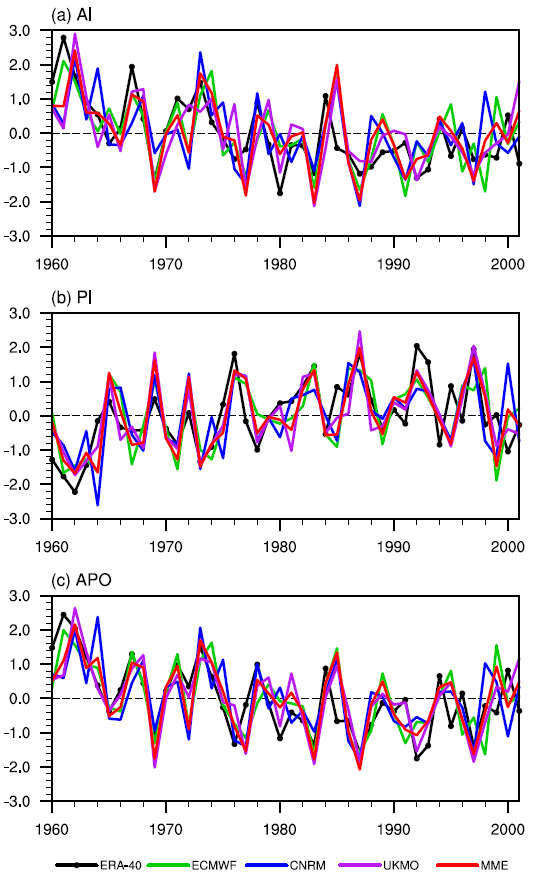The Asian-Pacific Oscillation(APO) is a large-scale teleconnection over the Asian-North Pacific sector and is closely associated with the summer climate over East Asia, and the sea surface temperature and the tropical typhoon frequency in the western North Pacific. Considering the current limited prediction skill of the East Asian summer climate, investigating the APO prediction is meaningful.
Scientists from Institute of Atmospheric Physics (IAP) investigated the predictability of the APO in DEMETER General Circulation Models (GCMs) and found that the GCMs are good at predicting the interannual variability of the APO and the associated circulation anomalies. However, there are substantial deficiencies for the GCMs in predicting the APO, such as the limited skills for the Asian upper-tropospheric temperature and the poor performances for the long-term varying trends.
Therefore, they further used the interannual increment approach to improve the APO prediction (Figure 1). Treating the year-to-year increment of a variable as the predictand, the interannual increment approach produced the final predicted variable by adding the predicted DY of the variable to the observed value from the previous year. Their results show that this new interannual increment approach can significantly improve the APO prediction. Moreover, the improved APO predictions are further used to improve the prediction of summer rainfall over the middle and lower reaches of the Yangtze River valley.

Figure 1 The observed and model predicted Asian upper-tropospheric temperature AI (a), North Pacific upper-tropospheric temperature PI(b) and APO (c) using interannual increment approach.
Their findings have been published in Journal of Climate in 2013 and 2014.
References:
Yanyan Huang, Huijun Wang, and Ping Zhao, 2013: Is the Interannual Variability of the Summer Asian–Pacific Oscillation Predictable?. J. Climate, 26, 3865–3876.
Yanyan Huang, Huijun Wang, and Ke Fan, 2014: Improving the Prediction of the Summer Asian–Pacific Oscillation Using the Interannual Increment Approach. J. Climate, 27, 8126–8134.






